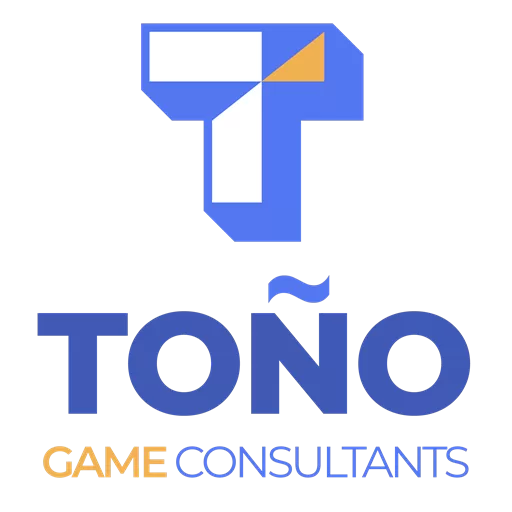Picture this: you’re in a sprint planning session, coffee in hand, and two voices clash.
On one side, the Scrum Master argues that without process discipline, nothing ships.
On the other, the Product Owner insists that vision and priorities drive the project’s success.
Who’s right? In truth, both. But here’s the catch: in game development, you won’t usually hear “Scrum Master” or “Product Owner.” Instead, those responsibilities get scattered across dev roles like Game Designers, Producers, Managers, and even Leads. Without a clear translation, the boundaries blur, causing confusion, scope creep, crunch, and endless rework. That’s why learning to map Scrum roles into game development language is critical for keeping projects on track.
Scrum Master → The Guardian of Process
In game development, the Scrum Master role often maps to Producers (technical and non-technical) or Team Leads. These are the people guiding development day to day, making sure the team’s time goes into the most valuable aspects of the project. A strong Producer (or Lead) acts as the safeguard against chaos, keeping workflows clear, removing blockers, and making sure progress isn’t derailed by distractions.
They also serve as the reality check, pushing back against unrealistic expectations such as overly ambitious schedules or creeping scope. By setting healthy boundaries, they protect the team from burnout and crunch while keeping delivery realistic and achievable.
Key responsibilities include:
-
Facilitating ceremonies: stand-ups, sprint planning, reviews, and retrospectives.
-
Removing blockers: technical issues, resource gaps, or coordination hiccups.
-
Protecting the team: balancing workload to maintain momentum without burnout.
-
Coaching in Agile: mentoring teammates in Scrum practices to keep progress consistent.
-
Scheduling releases: aligning updates and patches with backlog priorities.
Think of them as the shield for the team, ensuring the process runs smoothly so developers, artists, and designers can focus on their craft.
Product Owner → The Visionary with a Plan
If the Scrum Master is the shield, the Product Owner is the compass. In game development, this role often maps to Game Designers, Creative Directors, Monetization Managers, or Producers focused on priorities.
Where the Scrum Master ensures the team can build, the Product Owner defines what should be built and why. They are responsible for developing the business case for the game, connecting design vision, player expectations, and market realities into a roadmap that guides development.
That can take many forms:
-
Game Designers identify what makes the experience fun, engaging, and repeatable, and which player types the game appeals to.
-
Game Monetization Designers evaluate the size of the market and which segments are most likely to convert.
-
Marketing and Biz Dev push for content that supports campaigns, community building, and player demand.
In practice, the Product Owner balances all these inputs, constantly prioritizing so the team builds the features with the highest value first.
Core responsibilities include:
-
Defining vision and strategy: what the game is about, where it’s headed, and what success looks like.
-
Managing the backlog: prioritizing features, content, and fixes in line with business goals.
-
Communicating with stakeholders: aligning marketing, biz dev, QA, and community teams with development.
-
Maximizing value: ensuring the most impactful features hit first (often via an MVP).
-
Establishing the roadmap: breaking down vision into user stories, clear requirements, and acceptance criteria, all wrapped in an understandable definition of done that guides every discipline.
-
Gathering feedback: leveraging playtests, analytics, and player data to refine direction.
Unlike the Scrum Master, the Product Owner isn’t focused on how the work gets done. Instead, they decide what matters most and make sure the team builds toward it.
👉 Want a practical way to prioritize features like a Product Owner?
Check out our free Story Mapping Tool for game developers. It’s designed to help teams break down big visions into clear steps, align priorities, and avoid scope creep before it sneaks up on you.
To make it crystal clear, here’s how responsibilities split between Scrum Master and Product Owner when translated into game dev roles like Producers, Leads, Designers, and Directors:
| Responsibility | Scrum Master (Producers/Leads) | Product Owner (Designers/Directors/Producers) |
| Facilitate stand-ups & sprint ceremonies | ✅ Main role | ➖ Supports / attends |
| Remove blockers | ✅ Clears technical & process obstacles | ➖ Escalates vision conflicts |
| Define product vision & strategy | ➖ Facilitates clarity | ✅ Core responsibility |
| Manage backlog & priorities | ➖ Supports sizing & planning | ✅ Owns backlog |
| Protect team from burnout & scope creep | ✅ Key safeguard | ➖ Relies on Scrum Master |
| Stakeholder communication | ➖ Focus on dev team | ✅ Aligns players, marketing, business |
| Define roadmap, user stories, acceptance criteria | ➖ Assists with estimation | ✅ Owns definition of done |
| Player satisfaction | ➖ Protects delivery capacity | ✅ Ensures features meet player needs |
How Scrum Masters and Product Owners Team Up in Game Development
Scrum Masters (Producers/Leads) and Product Owners (Designers/Directors) bring different strengths to the table, but their impact multiplies when they work in sync. Here’s how they team up to keep game projects on track:
-
Shared Goals & Clear Alignment
The Product Owner sets the creative and business vision, what kind of game you’re making and what players will value most. The Scrum Master balances that against reality, ensuring the plan fits the team’s capacity. Together, they set achievable milestones that prevent scope creep and missed deadlines. -
Backlog & Priorities That Work
The Product Owner prioritizes features and content, while the Scrum Master ensures those priorities are realistic for the sprint. This joint refinement process helps keep updates flowing and prevents the team from burning out. -
Collaboration & Roadblock Removal
Every game project hits obstacles, from tech issues to last-minute stakeholder changes. The Scrum Master protects the team’s focus by clearing blockers, while the Product Owner adapts the roadmap and communicates with marketing, monetization, or community. It’s a one-two punch: one protects delivery, the other keeps value front-and-center. -
Continuous Feedback & Improvement
Scrum Masters foster retrospectives and Agile discipline, while Product Owners use playtests and player feedback to refine direction. Together they create a loop where both the process and the product keep getting better, like leveling up every sprint.
When both roles respect each other and stay aligned, they don’t just divide responsibilities, they multiply impact. That’s how great teams turn a vision into a finished game.
Is Scrum Master or Product Owner Right for You?
If you’re stepping into Agile game development, you might wonder: should I focus on being more of a Scrum Master or a Product Owner? Which role creates the biggest impact?
The truth is, it’s not about choosing one over the other. Both roles are essential, and both translate directly into game dev roles:
-
Scrum Master → Producers or Team Leads. They keep the team healthy, remove blockers, push back against unrealistic schedules or creeping scope, and make sure delivery is sustainable.
-
Product Owner → Designers, Creative Directors, or Monetization Managers. They set the game’s vision, define priorities, and ensure the features being built deliver the most value for players and the business.
You wouldn’t build a game with only code and no art, or with art and no design. The same principle applies here — one role protects the process, the other drives the vision. Together, they keep the project both achievable and meaningful.
So the better question isn’t “Which role should I pick?” but “How do I make sure both roles are represented on my team?”
Because when Scrum Masters and Product Owners work in balance, you don’t just ship a game — you ship the right game, at the right quality, without burning out your team. And that’s the foundation you need if you want to create your perfect game.
Ready to Strengthen Your Production Pipeline?
Scrum Masters and Product Owners may go by different names in game development, but the balance they represent is critical. Without strong production discipline, even the best designers and developers risk falling into chaos, crunch, and wasted effort.
👉 If you’re ready to align your roles, protect your team from burnout, and keep your project on track, explore our Game Production Consulting Services. We’ll help you build the clarity and systems your team needs to ship confidently.
Frequently Asked Questions About Scrum Master vs Product Owner in Game Development
What’s the difference between a Scrum Master and a Product Owner in game development?
The Scrum Master focuses on how the team works, protecting process, removing blockers, and preventing crunch. The Product Owner focuses on what the team builds, defining vision, prioritizing the backlog, and ensuring the game delivers value to players. Both are essential, but their responsibilities pull in different directions.
How do these roles translate to game development teams?
In game dev, Scrum Masters often map to Producers or Team Leads, while Product Owners map to Game Designers, Creative Directors, Monetization Managers, or Producers focused on priorities. Since titles vary across studios, understanding the intent behind each role is more useful than the exact label.
Can one person be both Scrum Master and Product Owner?
No. It’s a clear conflict of interest. The Scrum Master is responsible for protecting the team and the process, while the Product Owner is responsible for prioritizing features and pushing for value delivery. When those lines blur, the development team ends up paying the toll, usually in the form of scope creep, crunch, and lost focus.
Why is scope creep such a big problem in game development?
Because in game development, “the scope of your game tends to be infinite, the more you do, the more you want to add.” If it were up to most teams, the game would never actually be done. There’s always one more system to polish, one more feature to add, or one more idea that “would make it even better.” Without clear boundaries, projects spiral into endless work and late-stage burnout. That’s why the Product Owner role is critical: someone has to make the hard call on what gets built now, what gets pushed later, and what never makes it in.
Do indie teams need both roles?
Small indie teams may not have formal Scrum Masters or Product Owners, but they still need to cover those responsibilities. Even if one person wears multiple hats, someone must keep the vision clear (PO role) and someone must guard the workflow and team health (SM role).
Which role should I pursue in game development?
If you’re passionate about process, team health, and delivery discipline, the Scrum Master path (Producer/Lead) is a fit. If you’re more focused on design, priorities, and market alignment, the Product Owner path (Designer/Creative Lead) makes sense. Both are vital roles that shape how games get made.


